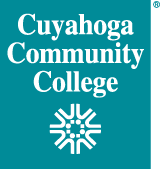When Cuyahoga Community College received a grant from Every Learner Everywhere to implement adaptive learning courseware across the college, Professor of Business Administration Michele Hampton had already been using adaptive courseware in her macroeconomics classes for a little over a year.
That made Hampton a natural choice when administrators were looking for faculty to take part in the Every Learner Everywhere pilot program to help institutions adopt adaptive courseware in their gateway courses. The goal at Cuyahoga Community College (also known as Tri-C) was to improve learning outcomes for students in those key courses in order to improve college completion rates — particularly for low-income and under-represented minority students.
While Hampton looked forward to the opportunity to convert her other courses to adaptive courseware, she was wary of the faculty learning community (FLC) that was created to support the undertaking at the school. But in the end, Hampton says, the adaptive learning FLC became the highlight of the whole process for her.
A faculty learning community can be a powerful way to support an adaptive learning implementation, but the FLC has to be well designed for it to be effective, notes Hampton: “Just putting faculty together in a room does not an FLC make.”
The FLC at Tri-C is composed of 15 faculty members teaching 13 courses (34 sections total), including art, business, biology, chemistry, economics, math, physics, and psychology. Along with the faculty, the FLC also includes instructional designers and two administrators. They meet monthly, rotating between Tri-C’s four campuses.
For Hampton, the group’s purpose, roster, and collaborative spirit have made this FLC one of the most effective in her experience.
Make it an active working group
It can often be challenging for faculty to find time for professional development in their schedules, so if they don’t feel like they’re accomplishing anything on a team, they may start checking out. “A lot of times in a faculty learning community, there’s a discussion of ideas and brainstorming but little action,” says Hampton.
At Tri-C, administrators made sure the FLC would engage faculty by making it a true working group committed to one goal: innovating in the learning environment in order to better things for students.
When the FLC meets, faculty present what’s working for them, brainstorm ideas together, and walk away with actual solutions. “We are all actively engaged in what is going on,” says Hampton.
The agenda is put together collaboratively by members of the FLC, rather than imposed from above. That means if someone has specific questions or wants to present an idea, they can be sure it will get heard.
Together, the FLC came up with common language for syllabi and intro videos, reviewed the data that was emerging from the courses, and worked out the functionality of the courseware.
Include more than just faculty
The FLC at Tri-C is also more effective because the faculty themselves are supported by instructional designers and administrators within the group.
With the inclusion of instructional designers and the two administrators, Hampton and her colleagues gain access to information and perspectives they might not have otherwise. Instructional designers help faculty vet courseware, design and roll out courses, and understand how to use the insights to refine their teaching. The administrators keep the FLC running smoothly without requiring faculty to take on additional responsibilities.
“We could just come and be faculty,” says Hampton. “We didn’t have to coordinate the whole effort. We could come and focus on actively participating.”
By including more than just faculty members in the FLC, it gave the working group access to additional resources when challenges emerged. For example, implementing the new adaptive courseware caused faculty to miss the order deadlines at the campus bookstores. All four campuses were handling the issue a bit differently, but the FLC was able to bring in the head of the bookstores to troubleshoot the issue.
Facilitate collaboration
The last thing that made the FLC so effective, notes Hampton, is that everyone was able to work together collaboratively. The FLC drew on faculty from different disciplines, many of whom were using different courseware, which gave an opportunity for everyone to share what they were doing and learn from each other.
One example of innovation came from the biology department, which had decided to flip the idea of data dashboards on its head. Instead of just using the dashboard as a way to help instructors understand how students were doing, they presented the dashboards to students so they could benefit from seeing data on their own progress.
They created an assignment to get students familiar with their own dashboards, and talked the rest of the departments through the idea. “None of us were thinking like that,” says Hampton. “But it makes a lot of sense. We really became an implementation resource for each other.”
An effective FLC starts by focusing on students
Hampton recalls the moment when she went from being skeptical to becoming excited about the Every Learner Everywhere grant and the faculty learning community: “When I could see the grant was really about improving things for students and being innovative in the learning environment, I was on board.”
That focus on students created an enthusiasm among all the faculty learning community members at Cuyahoga Community College, and turned it into a critical part of their successful adaptive courseware implementation.
- Learn more about faculty development with our Faculty Professional Development toolkit.




